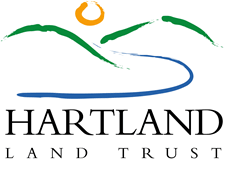HLT Land Use Policy
Guiding Principles
Land trusts have an obligation to protect the ecological and legal integrity of their fee-owned lands and conservation easements by complying with the conservation restrictions and management plans approved for those properties. As private not- for-profits serving the public interest, land trusts can allow various activities on their properties in compliance with the donor’s wishes.
Definitions of Activities on HLT Lands:
The following are definitions of allowable and prohibited activities.
I. Allowed Activities (Low-Impact Recreational) on HLT Nature Preserves:
Allowed activities are activities that do not adversely affect the integrity of the protected habitats and the ecological system. Activities include: nature study and enjoyment, birding, walking/hiking, picnicking, trail running, photography, cross-country skiing and snowshoeing.
II. Prohibited Activities on HLT Nature Preserves:
To avoid significant conflicts with core management goals, the following activities are not permitted on HLT properties: Harvesting timber; collecting downed wood, minerals, historic artifacts, plants and animals; hunting, target practice, archery, trapping, any killing of wildlife; motorized vehicles except for HLT maintenance and Emergency Vehicles; camping, campfires; smoking, consumption of alcohol / drugs; dumping; competitive sports events/activities, swimming, ice-skating; mining, metal detecting; and flying recreational single rotor, multi rotor or fixed winged drones. If an activity is not specifically described and allowed, then it is not permitted without expressed written permission of Hartland Land Trust Board of Directors.
III. Activities Allowed by Expressed Written Permission on HLT Nature Preserves:
Activities that have the potential to adversely affect the integrity of protected habitats or conflict with the preserve’s management activities will be evaluated by the Land Conservation and Stewardship Committee (LC&S) and thence the Board of Directors. Such activities include: horseback riding, collecting animals, plants or fungi for scientific use, non-motorized vehicle use such as mountain biking, earth cache, geocache, and letterboxing sites, organized property and project tours, environmental education activities, competitive sporting events, aerial photography and research activities. Requests for permission for these activities will be reviewed on a case-by case basis. Requests should be submitted to Hartland Land Trust Board in writing at least two months prior to the anticipated start date for the activity.
IV. HLT “Nature Sanctuary” activities:
HLT Nature Sanctuary(s) are established to set a higher level of land protection, and in so doing, limit human activity on the property(s). HLT does not allow access to the general public on their Nature Sanctuary(s). Trails will not be developed and access is only allowed through prior HLT Board approval. HLT Nature Sanctuary(s) may be used for educational purposes, guided nature study walks, flora and fauna studies by groups such as the Audubon, Connecticut Botanical Society, land trusts and other conservation organizations.
Trail Use Guidelines (to be posted on the HLT trail kiosks):
• Use the trails at your own risk
• Stay on the trails at all times
• Only activities considered “passive recreation”
• No hunting
• Carry out what you carry in: “Leave no Trace”
• Do no damage to the natural flora
• Dogs must be leashed at all times
• Owners will be responsible for their dogs at all times
• No Bicycles or Motorized Vehicles
• No Campfires or Camping
• Properties Open Dawn to Dusk
Draft: 11-11-2019
Board Approved: 11-25-2019
Reviewed and Board Approved: 10-24-2022
Board Reviewed: 04-24-2023
Revised: 04-26-2023 04-29- 2023 06-17-2023
Reviewed and Approved: 06-26-2023


